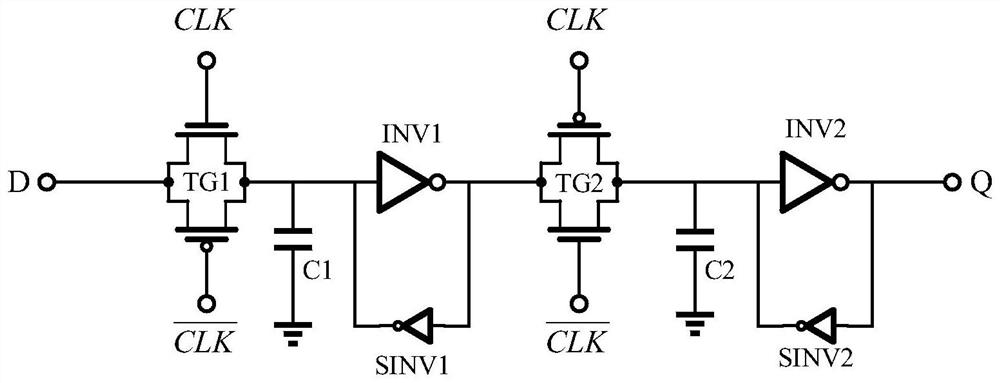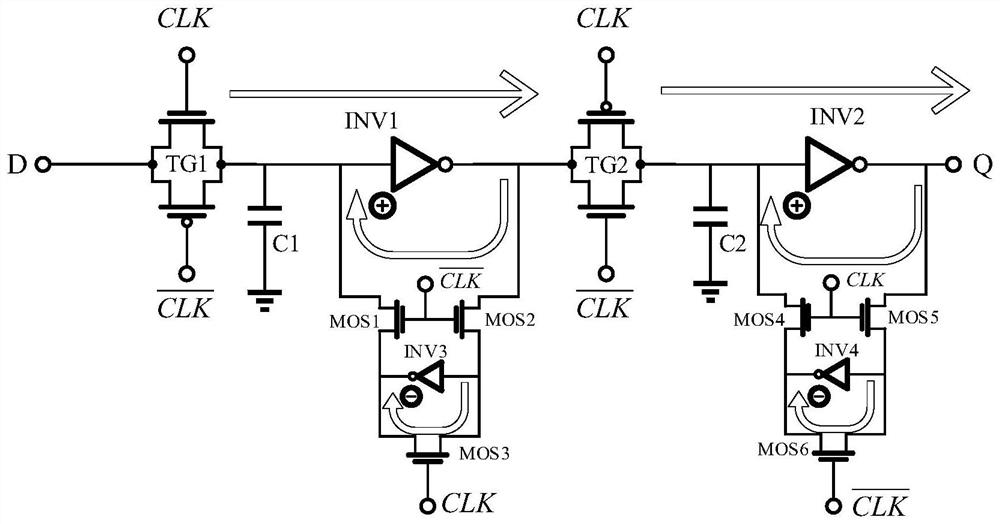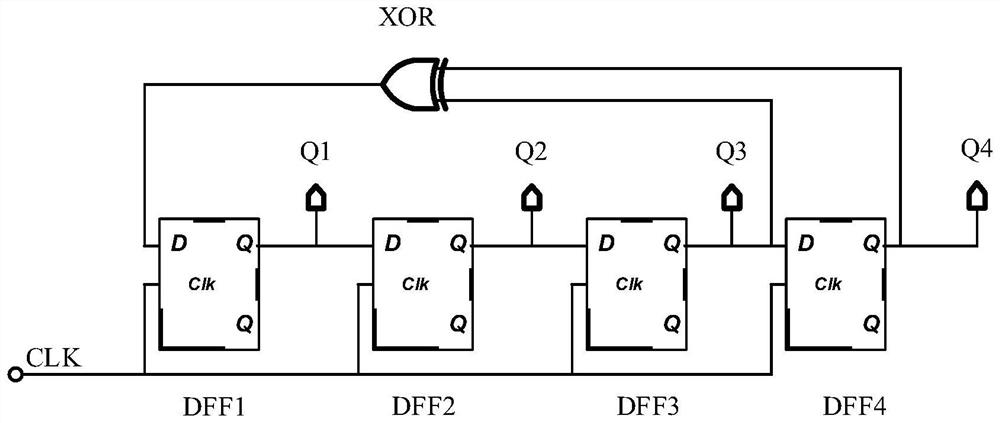Dynamic D flip-flop for improving pseudo static loop based on negative feedback
A negative feedback, flip-flop technology, applied in pulse technology, pulse generation, electrical components, etc., can solve the problems of D flip-flop function failure, data cannot be written, etc., to ensure high-speed advantages, ensure functions, and improve data writing. Effect
- Summary
- Abstract
- Description
- Claims
- Application Information
AI Technical Summary
Problems solved by technology
Method used
Image
Examples
specific Embodiment 1
[0031] Combine the following figure 2 The specific circuit connections and implementations and device parameters of the present invention are described.
[0032] In order to solve the pseudo-static loop problem of the dynamic D flip-flop, the present invention proposes a circuit based on sequential control and negative feedback control. The entire circuit consists of transmission gates, charge storage, inverters and MOS transistors. figure 2 The first stored charge C1 and the second stored charge C2 are replaced by the parasitic capacitances of the gates in the input stages of the first inverter INV1 and the second INV2. Using the parasitic capacitance as a capacitor for storing charges can reduce the data writing time on the one hand and the layout area on the other hand.
[0033] The connection relationship of the specific embodiment 1 is as follows: the first transmission gate TG1, one end is connected to the input signal D, and the other end is connected to the input e...
Embodiment 2
[0045] image 3 The middle is the logic structure diagram of pseudo-random sequence generation, in which the input D terminal and output Q terminal of the first D flip-flop DFF1, the second D flip-flop DFF2, the third D flip-flop DFF3, and the fourth D flip-flop DFF4 are cascaded , that is, the output Q1 terminal of the first D flip-flop DFF1 is connected to the input D2 terminal of the second D flip-flop DFF2, the output Q2 terminal of the second D flip-flop DFF2 is connected to the input D3 terminal of the third D flip-flop DFF3, and the third The output Q3 terminal of the D flip-flop DFF3 is connected to the input D4 terminal of the fourth D flip-flop DFF4, and the output Q3 terminal of the third D flip-flop DFF1 and the output Q4 terminal of the fourth flip-flop DFF4 are connected to the XOR of the exclusive OR gate in the figure. The input terminal is used for XOR operation, and the output terminal of the XOR gate XOR is connected to the input terminal of the first flip-flo...
Embodiment 3
[0048] Figure 4 In the middle is a two-frequency divider formed by using the dynamic D flip-flop of the present invention. The clock terminal of the first D flip-flop DFF1 is connected to the first forward clock CLK, the output Q1 terminal is connected to the input terminal of the first inverter INV1 and the input terminal of the second inverter INV2, and the output of the first inverter INV1 The terminal is connected to the input D1 terminal of the first D flip-flop, and the output terminal of the second inverter INV2 is to output the divided-by-2 frequency signal OUT of the first forward clock CLK.
[0049] The frequency dividing buffer stage of the second inverter INV2 improves the driving capability of the frequency dividing. Figure 7 The time domain waveform of the frequency divider formed by the improved dynamic D flip-flop structure based on the negative feedback pseudo-static loop is shown. Input a high-frequency 5GHz clock signal, and the output is a 2.5GHz divide...
PUM
 Login to View More
Login to View More Abstract
Description
Claims
Application Information
 Login to View More
Login to View More - R&D
- Intellectual Property
- Life Sciences
- Materials
- Tech Scout
- Unparalleled Data Quality
- Higher Quality Content
- 60% Fewer Hallucinations
Browse by: Latest US Patents, China's latest patents, Technical Efficacy Thesaurus, Application Domain, Technology Topic, Popular Technical Reports.
© 2025 PatSnap. All rights reserved.Legal|Privacy policy|Modern Slavery Act Transparency Statement|Sitemap|About US| Contact US: help@patsnap.com



